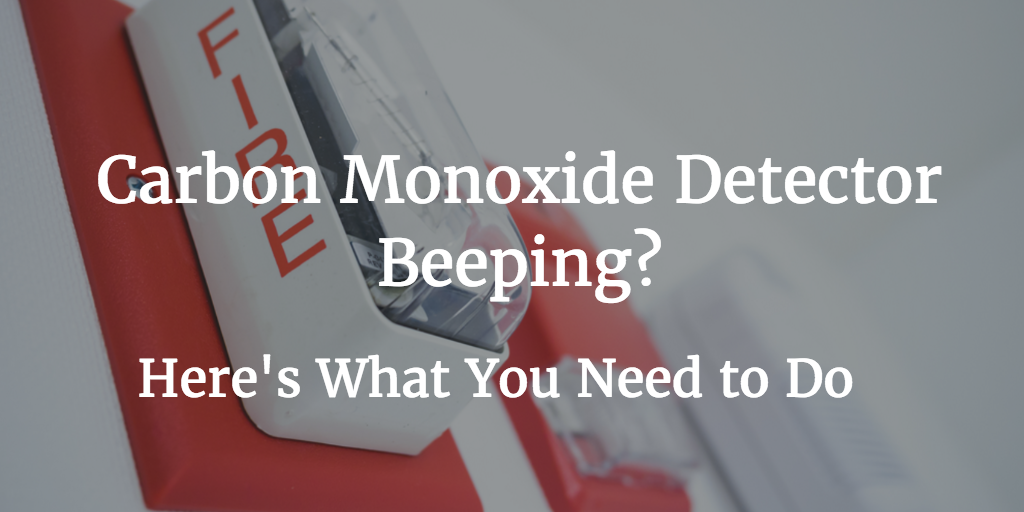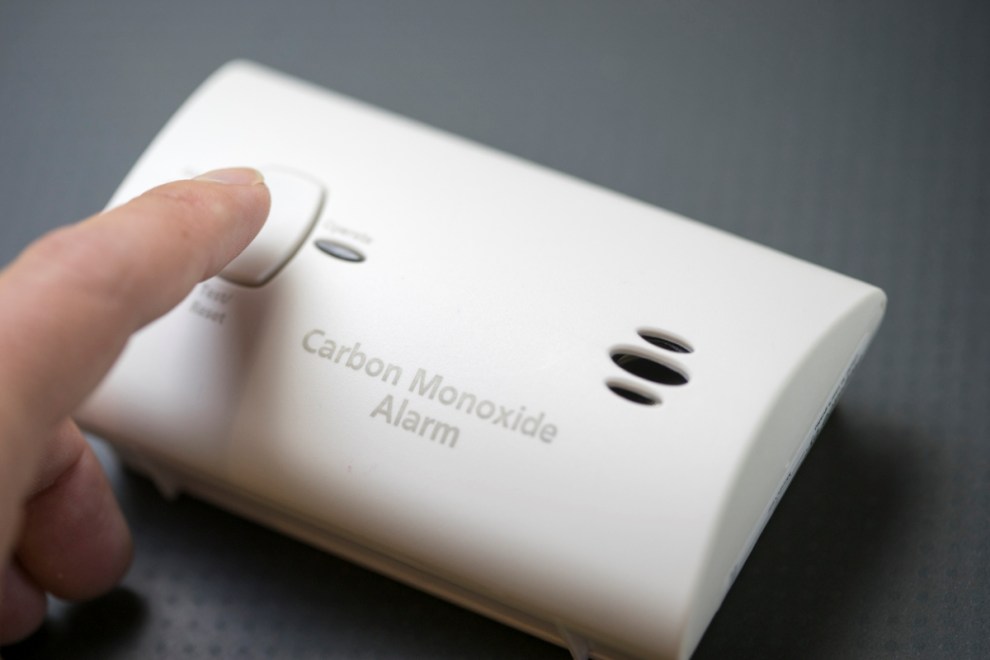Why Does My Carbon Monoxide Keep Beeping

Carbon monoxide (CO) is an odorless, colorless gas that can be deadly. That's why it's crucial to have working CO detectors in your home or facility. When your CO detector starts beeping, it's trying to tell you something important. This FAQ will help you understand why your carbon monoxide detector is beeping and what steps you should take.
Frequently Asked Questions About Carbon Monoxide Detector Beeping
Q: My carbon monoxide detector is beeping. What does this generally mean?
A beeping carbon monoxide detector typically indicates one of two things: either it has detected dangerous levels of CO, or it is experiencing a malfunction or end-of-life issue. It's crucial to differentiate between these two scenarios to ensure your safety. The type of beep and the frequency of beeping usually provides clues.
Q: How can I tell the difference between a CO emergency alarm and a low-battery or end-of-life warning beep?
This is a critical distinction. Here's how to differentiate:
- Emergency Alarm (CO Detected): Typically, this is characterized by four rapid beeps, followed by a pause, and then the pattern repeats. Many detectors will also display "CO" or "GAS" on the screen. Treat this as an emergency!
- Low Battery Warning: Usually a single chirp (a short, quiet beep) that occurs every 30-60 seconds. The detector might also display a low battery symbol.
- End-of-Life Warning: Often a similar chirp to the low battery warning (single chirp every 30-60 seconds), but the detector may also display "END" or "LIFE." This indicates the sensor has reached the end of its lifespan and the detector needs to be replaced, even with a new battery. The pattern could also be three beeps every minute, or different depending on the manufacture
- Malfunction/Error: Some detectors have different beep patterns or display error codes to indicate a malfunction. Consult your detector's manual to understand these specific signals.
Always check your detector's user manual to understand the specific beeping patterns and their meanings for your model.
Q: My CO detector is giving the emergency alarm (four beeps). What should I do immediately?
If your CO detector is sounding the emergency alarm, follow these steps:
- Evacuate Immediately: Get everyone out of the building immediately. Don't waste time opening windows or trying to find the source of the CO. Just get to fresh air.
- Call Emergency Services: From a safe location outside the building, call your local emergency services (e.g., 911). Inform them of the CO alarm and that you have evacuated.
- Do Not Re-enter: Do not re-enter the building until the emergency services personnel have arrived, investigated the situation, and declared it safe to return. They will have specialized equipment to detect and measure CO levels.
- Ventilation: Once authorities give the all-clear, thoroughly ventilate the building by opening windows and doors.
- Identify the Source: After the building is ventilated, try to identify the potential source of the CO. This could be a faulty furnace, water heater, stove, fireplace, generator, or vehicle exhaust.
- Professional Inspection: Have all fuel-burning appliances inspected by a qualified technician to ensure they are functioning correctly and safely before using them again.
Your safety is paramount. Don't take any chances when a CO detector is sounding the emergency alarm.
Q: My CO detector is just chirping intermittently. Is this still a cause for concern?
A chirping CO detector is often less urgent than the full emergency alarm, but it still needs your attention. As mentioned earlier, a chirp usually indicates a low battery or end-of-life signal. Here's what to do:
- Replace the Battery: If the chirp is accompanied by a low battery indicator, replace the battery immediately. Use the type of battery specified in your detector's manual. After replacing the battery, test the detector to ensure it is working correctly.
- Check the Expiration Date: CO detectors have a limited lifespan (typically 5-10 years). Check the manufacturing date or expiration date on the detector. If it's expired, replace the entire unit, even if the battery is new.
- Clean the Detector: Dust and debris can sometimes interfere with the sensor's function. Gently vacuum the detector's exterior to remove any buildup.
- Test the Detector: After replacing the battery or cleaning the detector, press the "test" button to ensure it's functioning correctly. The detector should emit a loud beep when the test button is pressed.
- Consult the Manual: If the chirping persists after replacing the battery and cleaning the detector, consult the user manual for troubleshooting instructions specific to your model. It's possible there's another type of malfunction.
If you're unsure about the cause of the chirping or how to resolve it, it's always best to consult a qualified technician or contact the manufacturer of the detector.
Q: What are some common sources of carbon monoxide in a home or building?
Knowing the potential sources of CO can help you prevent dangerous buildup. Common sources include:
- Fuel-Burning Appliances: Furnaces, boilers, water heaters, stoves, ovens, fireplaces, and space heaters that burn natural gas, propane, oil, kerosene, or wood. Improper ventilation or malfunctioning burners can lead to CO leaks.
- Vehicles: Cars, trucks, and motorcycles produce CO as a byproduct of combustion. Never run a vehicle in a garage, even with the door open.
- Portable Generators: These are a significant source of CO. Always operate generators outdoors in a well-ventilated area, away from windows, doors, and vents.
- Blocked Chimneys or Flues: Obstructions in chimneys or flues can prevent exhaust gases from escaping, causing CO to build up indoors.
- Gas Leaks: While natural gas itself is odorless, utility companies add a distinctive smell (usually resembling rotten eggs) to help detect leaks. However, a malfunctioning appliance can still produce CO even without a noticeable gas smell.
- Grills: Charcoal and propane grills produce CO. Never use them indoors or in enclosed spaces.
Regular maintenance of fuel-burning appliances and proper ventilation are crucial for preventing CO poisoning.
Q: Where should I install carbon monoxide detectors in my home or facility?
Proper placement of CO detectors is essential for ensuring they can effectively detect CO and alert you in time. Here are some guidelines:
- Install on Every Level: Place a CO detector on every level of your home or facility, including the basement.
- Near Sleeping Areas: Install detectors in or near sleeping areas, such as hallways outside bedrooms. This is crucial because people are most vulnerable to CO poisoning while they are sleeping.
- Near Potential Sources: Install detectors near potential sources of CO, such as furnaces, water heaters, and fireplaces. However, follow the manufacturer's instructions regarding distance from these appliances, as some detectors may be affected by high heat or humidity.
- Avoid Obstructed Areas: Do not place detectors behind furniture, curtains, or other obstructions that could block airflow to the sensor.
- Follow Manufacturer's Instructions: Always follow the manufacturer's instructions for installation. These instructions will provide specific recommendations for placement based on the detector's design and technology.
- High or Low Placement CO detectors are usually effective in either high or low placement. Follow the manufacture specification for height for proper CO detection.
Regularly test your CO detectors to ensure they are working correctly. Consider interconnected CO detectors, so if one detects CO, all detectors in the building will sound the alarm.
Q: How often should I test and replace my carbon monoxide detectors?
Regular testing and replacement are crucial for ensuring your CO detectors are functioning reliably. Here's a recommended schedule:
- Test Monthly: Test your CO detectors monthly by pressing the "test" button. The detector should emit a loud beep when the button is pressed.
- Replace Batteries Annually: Replace the batteries in your CO detectors at least once a year, or whenever the low battery warning sounds. It's a good practice to replace the batteries when you change your clocks for daylight saving time.
- Replace Detectors Every 5-10 Years: CO detectors have a limited lifespan, typically 5-10 years. Check the manufacturing date or expiration date on the detector. Replace the entire unit when it reaches the end of its lifespan, regardless of whether the battery is still good. The sensor degrades over time, making the detector less reliable.
- After a CO Event: If your CO detector has alerted you to a CO event, even if the levels were low, it's a good idea to replace the detector as a precaution. Exposure to CO can potentially damage the sensor.
Keep records of when you test and replace your CO detectors. This will help you stay on schedule and ensure your detectors are always functioning optimally.










